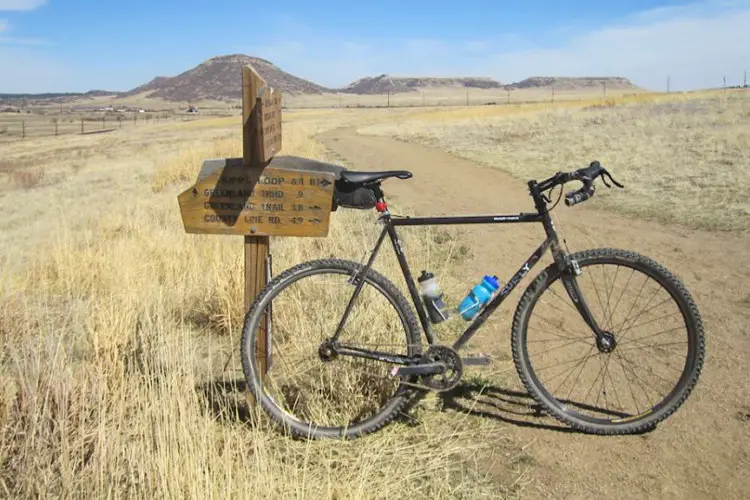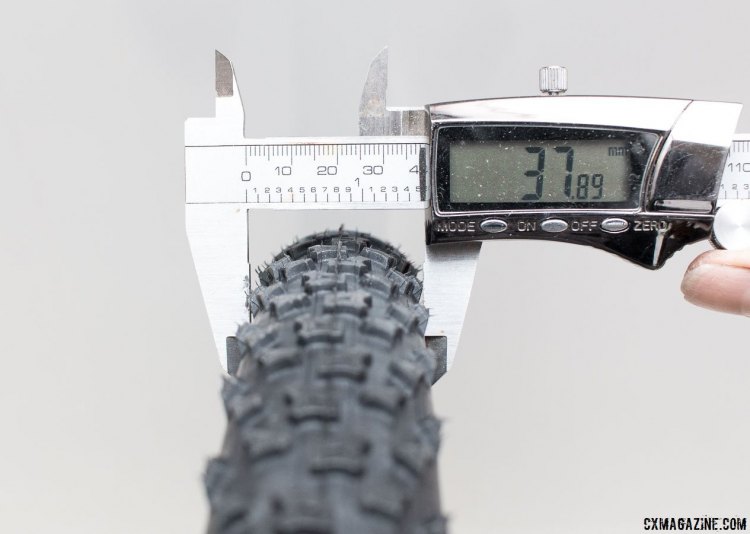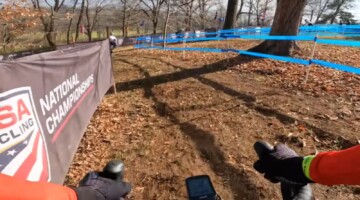In its never-ending quest to level the playing field and grow the sport, USA Cycling has unveiled a new initiative and categories for the 2018 Nationals in Louisville.
“We’ve heard the complaints about our tire width rule, and even though we’ve had the 35mm maximum on the books, we admittedly haven’t enforced it after the first year,” said USA Cycling’s Vice President of Operations, Chuck Hodge. “We understand rims have gotten wider, tubeless has gotten better, and most amateurs have embraced this new technology and are racing on tires that end up inflated to wider than 35mm.”
“We understand that the extra volume is necessary to compete against high-priced cotton or silk tubulars,” Hodge explained. “We don’t want these athletes to have to change equipment just for Nationals, so to accommodate this new technology and type of racer, effective this coming cross season, we will have we will have a new category for these tubeless high-volume racers. They deserve an ability to compete for national championships as well, but we didn’t know what to call this category. After reading your interview with Monster Cross News’ Jon Severson, it was obvious. We need a new monster cross category.”

Monster cross bikes like Jon Severson’s second Surly Cross Check singlespeed monster cross will have a home in USA Cycling races now. photo: courtesy
Severson follows Matt Chester’s history of defining monster cross bikes as having wide tires between 38 and 45mm, with dirt drop handlebars, based on the legacy of Matt Chester and all his work due to define the segment.
“This category of tires is blowing up,” said USA cycling’s Derek Bouchard-Hall. “As evidence of our effort to be inclusive of all types of cyclist and all types of technology, we are giving this new category of racers its own recognition at the championship level.”
[See also: Monster Cross Mania: 8 Top Monster Cross Tires]
In the spirit of fairness and to properly recognize this new category, USA Cycling plans to strictly enforce the new category regulations with digital calipers at the start line. “This 9mm of extra width is quite generous,” Bouchard-Hall continued. “And I think all racers who take the time to follow the monster cross tradition will really appreciate us making sure someone with a 32mm or 48mm clincher doesn’t try to squeeze into the category and roll away with the title.”
Monster cross fans will likely be supportive of the recognition, but purists may feel it doesn’t quite go far enough. “Cyclocross bikes with big tires are still cyclocross bikes,” said Severson of MonsterCross News in our recent interview. He went on to further explain that drop bars on mountain bikes create drop bar mountain bikes, not monster cross machines. Without dirt drop handlebar requirements and a suspension ban, the do-it-all monster cross bike fans might find the new recognition at Cyclocross Nationals not restrictive enough.
When pressed about whether the governing body is trying to hit a moving target, especially with dual wheel diameter bikes and gravel bikes embracing 2.25 in 650b rubber, Bouchard-Hall acknowledged that the gravel and adventure bike segment also deserves a look. “First things first,” he said. “The monster cross segment is both blowing up and has been around for a while. Gravel bikes and adventure bikes have just been invented and are in their infancy. We’ll have to keep an eye on that segment to see where it ends up, and if we need a gravel bike or adventure bike segment at Nationals, you can be sure we will consider it.”
He continued, “If someone wants to race 650b x 2.5” tires, on a true cyclocross course, who are we to say no? We want to include everyone, yet don’t want pro teams with sponsor obligations, and only 33mm cotton tubulars to feel disadvantaged. So we may look into adding those categories as well, to keep a level playing field, and keep growing the pie and our national championships.”
Bouchard-Hall acknowledged that such enforcement may up the cost of putting on the event, but the governing body is contemplating creative ways to offset such costs.
One idea that’s being tossed around is a small surcharge for enforcement of the additional restrictions of the monster cross category. “These racers are likely saving money by training and racing tubeless tires, so we think a small $5 surcharge for proper enforcement will be well received,” Bouchard-Hall said. “We don’t think that is too big of a line to cross. It’s similar to our Race Clean program. You could call it our Clean Monster program.”
This story was published on April 1, 2018.



























